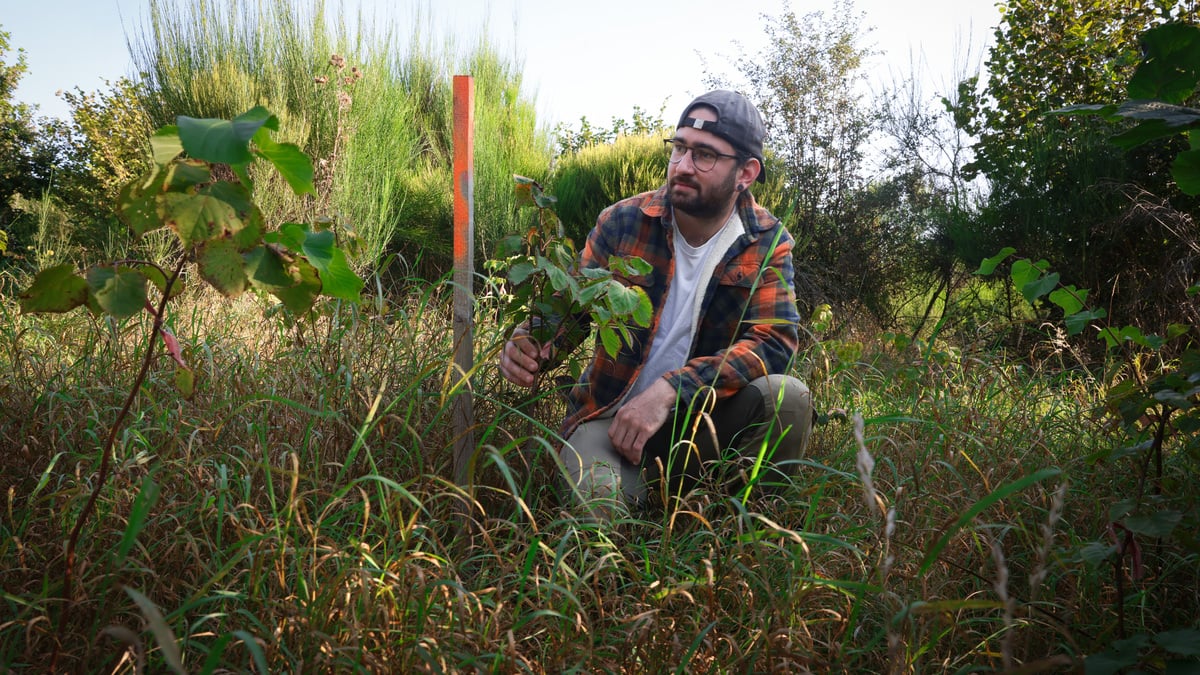Although the weather conditions are no longer favourable, trees can theoretically also suffer a kind of sunburn. Nature then proves how well it can adapt to its conditions: beech trees, for example, grow so-called water vines – small branches with leaves to protect them from the sun.
However, the trees would not have to make this extra effort if the forest area in question had sufficient forest edge.
If a forest is protected by an edge, not too much light reaches the right trees in the first place and the soil dries out less. This means that the smallest creatures, which you may not even be able to see with the naked eye, are not disturbed by sun rays.
The edge of the forest can also protect the main forest from the wind, as it does not blow with full force under the treetops.
So could the edge of the forest be described as a kind of gateway to the forest that determines whether it is doing well? “Yes, definitely,” said Julien Bosseler, who is responsible for forestry and forest management at the Hëllef fir d’Natur foundation and is also the planting manager for the Planzt mat! campaign. “The forest edge plays a very important role in the condition of the forest,” he said.
“There are many different plants and shrubs in the forest edge, various hedge structures and everything grows close together,” said Bosseler.
It is particularly important that the different layers of the forest are arranged in stages. “You can recognise these levels by the species,” said Bosseler, citing the herb layer, the shrub layer and the tree layer. The herb layer usually develops all by itself, while the shrub layer comprises smaller structures such as hedges and shrubs. In addition, there is the tree layer, which lies in front of the actual tree population of the forest.
Anyone can create the edge of the forest through their own efforts. Last year, for example, Bosseler’s foundation planted a forest edge with very specific species. These included field meadows, silver birch, wild apple, bird cherry, wild pear, rowan and wild service tree.
“These are all species that also favour this stage,” he said. At the same time, the trees that bear berries in particular would naturally also attract the appropriate fauna, such as birds.
Latest figures are cause for concern
Forest dieback is progressing rapidly around the world – even though more than 140 countries have committed to combating the problem. As the global Forest Declaration Assessment 2025 shows, an area the size of Scotland disappeared in 2024.
Compared to 2022, the area lost has increased from 1.7 to 8.3 million hectares. Conservationists in Luxembourg are also concerned: according to the latest figures, around four out of five trees in Luxembourg are also suffering damage due to climate change, pest infestation and excessive game browsing.
Also read:When forests have to make way for industry
In addition, when planting and maintaining the edge of the forest, structures can also be created in which hedgehogs, for example, feel at home. The edge of the forest next to fields is also a valuable biotope for insects as well as deer and their fawns.
“I would say that every kind of creature would benefit from a forest edge,” said Bosseler. However, the presence of mice that might gnaw on the forest must also be taken into account.
However, the much greater threat to the forest is and remains man. This is because forest areas are often cut off from fields or settlements.
According to Bosseler, it is vital to therefore leave space for the edge of the forest and give nature the chance to shape it itself. After all, nature can grow all by itself to protect the edge of the forest in stages, if it is allowed to do so.
Anyone can create and maintain the forest edge biotope through their own efforts, but can also simply give nature the chance to spread, explained Julien Bosseler (second from right) © Photo credit: Photo courtesy of Julien Bosseler
A mosaic of forest plots
However, the majority of people no longer realise how important the edge of the forest is for the ecosystem. Nature conservation organisations, foresters and forestry offices must first work to raise awareness.
Another problem in Luxembourg is the high number of forest owners, with Bosseler describing a mosaic-like picture from which biotopes such as the forest edge suffer. As many different people own many plots of land, these are often so small that there is not much space left for an edge.
In addition to climate change and associated forest fires, agriculture is one of the main reasons for the disappearance of the forest and its edge.
For Bosseler, however, restricting the edge is not the right approach, nor is radically pruning the forest so that individual trees can develop better. From his studies, he knows that it is more important for the forest to be dense – so that the sun’s rays do not dry out the soil. “And that’s what it’s all about,” he said, underlining the importance of the edge of the forest.
Also read:Why diversifying your portfolio also helps in a forest
Planzt Mat! campaign – You can help the forest too
Anyone interested can make a donation to help rejuvenate the forest area in Niederfeulen.
These donations are tax-deductible and can be made via Payconiq or via the donation account of the Hëllef fir d’Natur Foundation – LU89 1111 0789 9941 0000 with the note “Planzt mat!” – can be made.
With a donation of €100 or more, you can help to restore a 100-square-metre plot in the forest area in Niederfeulen.
(This story was originally published by the Luxemburger Wort. Translated using AI, with editing and adaptation by John Monaghan.)
